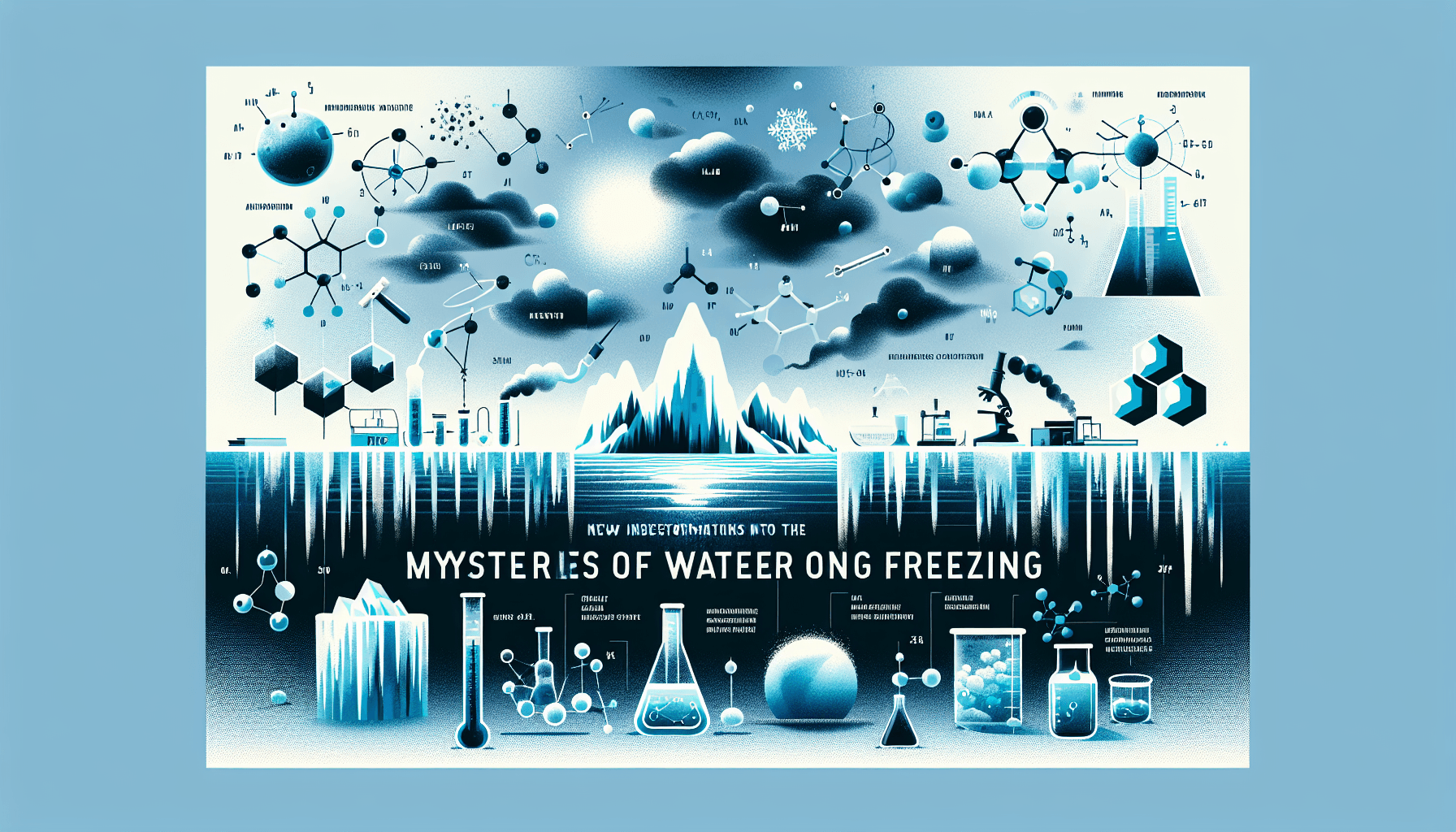Today in Edworking News we want to talk about The Enduring Mystery of How Water Freezes

New simulations indicate that ice crystallization happens fastest — this slow-motion movie covers mere nanoseconds — when water is tuned to a critical point called the liquid-liquid transition.
Source
 Introduction
Introduction
We learn in grade school that water _freezes_ at zero degrees Celsius, but that’s seldom true. In clouds, scientists have found supercooled water droplets as chilly as minus 40 C, and in a lab in 2014, they cooled water to a staggering minus 46 C before it froze. You can supercool water at home: Throw a bottle of distilled water in your freezer, and it’s unlikely to crystallize until you shake it.
Freezing usually doesn’t happen right at zero degrees for much the same reason that backyard wood piles don’t spontaneously combust without a spark. Ice needs a nucleus — a seed of ice around which more and more water molecules arrange themselves into a crystal structure. The formation of these seeds is called ice nucleation.
Nucleation is so slow for pure water at zero degrees that it might as well not happen at all. But in nature, impurities provide surfaces for nucleation, and these impurities can drastically change how quickly and at what temperature ice forms. For a process that’s anything but exotic, ice nucleation remains surprisingly mysterious. Chemists can’t reliably predict the effect of a given impurity or surface, let alone design one to hinder or promote ice formation. But they’re chipping away at the problem. They’re building computer models that can accurately simulate water’s behavior, and they’re looking to nature for clues — proteins made by bacteria and fungi are the best ice makers scientists know of.
Understanding how ice forms is more than an academic exercise. Motes of material create ice seeds in clouds, which leads to most of the precipitation that falls to Earth as snow and rain. Several dry Western states use ice-nucleating materials to promote precipitation, and U.S. government agencies including the National Oceanic and Atmospheric Administration and the Air Force have experimented with ice nucleation for drought relief or as a war tactic. (Perhaps snowstorms could waylay the enemy.) And in some countries, hail-fighting planes dust clouds with silver iodide, a substance that helps small droplets to freeze, hindering the growth of large hailstones.

 Freezing Water
Freezing Water
What’s special about zero degrees is that, at or below this temperature, it makes energetic sense for water to turn from liquid into ice. Below that threshold, ice’s crystal structure has a lower energy than sloshing water molecules. The process of freezing water actually releases heat, which is why you can use an infrared camera to see ice heat up as it solidifies.
Ice nucleation begins when, by chance, random jiggling arranges a small patch of triangular H2O molecules into a hexagonal ice structure. This ice embryo might grow into a nucleus and kick off freezing. Or it might just dissolve away. Until a speck of frost reaches a certain size, the cost of its interface overwhelms the payoff of energy released by the ice formed inside. This barrier to nucleation is like being at the top of a sea cliff on a hot day. You’re hot; you’d rather be in the water. But without a gust of wind to push you off or a friend to encourage you to jump, your fear keeps you paralyzed, trapped in the less-ideal state at the top of the cliff.

 Boosting Nucleation
Boosting Nucleation
Surfaces and impurities can dramatically lower the energy barrier for nucleation and therefore raise the temperature at which ice forms. “Since the late 1970s, we’ve known that there are lots of aspects of a surface that are important,” said Miriam Freedman, an atmospheric chemist at Pennsylvania State University. Like a microscopic construction scaffold, surfaces with the right structure make it easier for water molecules to arrange themselves into a crystal. Researchers have identified a few things that can make a surface better or worse at nucleating ice. A surface’s crystallinity, or structural orderliness, matters. And substances with chemical structures that mimic ice tend to be good at ice nucleation.
Meister and Molinero have been working together to unravel the secrets of nature’s best snow makers — bacteria and fungi whose proteins interact with water in ways that promote ice nucleation. Many of these organisms are plant pathogens, and it’s possible that their ice-nucleating proteins evolved to cause frost damage. The best known ice nucleator is a bacterium called Pseudomonas syringae, which has a protein that can force water to freeze at around minus 2 degrees Celsius. “It’s so good that all the artificial snowmaking, at least in Utah, and some [other] places in the U.S., use this bacteria to make snow,” Meister said.
 Predicting Ice
Predicting Ice
Molinero develops theories and computational models that capture how ice nucleates, including its interaction with surfaces.
In 2009, she and her colleague Emily Moore published a simplified model of water that treats each H2O molecule as a single, tetrahedron-shaped atom; surprisingly, computer simulations of this monatomic-water model accurately reproduce water’s large-scale properties, like its density. Then, in 2011, Molinero and Moore used the monatomic-water model to pinpoint a specific structural change in supercooled water that sets the lower limit of water’s freezing point. More recently, in computer simulations published in May in the Proceedings of the National Academy of Sciences, Molinero and her colleagues showed that ice crystallization happens fastest when water’s temperature and pressure are tuned to a point of transition between denser and less dense liquid phases. And in March, they presented a new model at the American Chemical Society conference that can predict the temperature at which ice will nucleate on a given surface.

Image Credit: Unsplash
Using the formula, Molinero thinks it should be possible to design better ice-nucleating materials just by introducing defects of the right size and shape. “You can take a surface that is not so good and make it quite outstanding,” she said.

Remember these 3 key ideas for your startup:
- Understanding Environmental Impact:
- Knowing how water _crystallizes_ helps predict and control precipitation and extreme weather. This understanding can guide the development of sustainable environmental technologies. - Innovative Material Design:
- The capacity to predict ice nucleation on various surfaces can lead to the creation of better materials. This has diverse applications, from improved refrigeration technology to more efficient climate control strategies. - Leveraging Natural Phenomena:
- Utilizing biological insights, such as ice-nucleating bacteria, offers innovative ways to enhance artificial processes. Startups can explore these biological mechanisms for cost-effective and natural solutions.
**Edworking** is the best and smartest decision for SMEs and startups to be more productive. Edworking is a FREE superapp of productivity that includes all you need for work powered by AI in the same superapp, connecting Task Management, Docs, Chat, Videocall, and File Management. Save money today by not paying for Slack, Trello, Dropbox, Zoom, and Notion.
For more details, see the original source.






